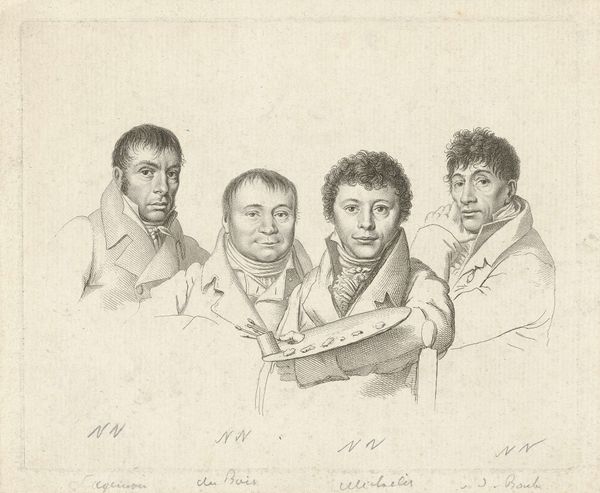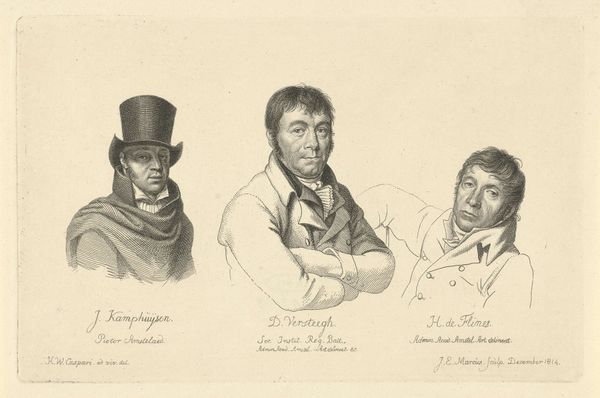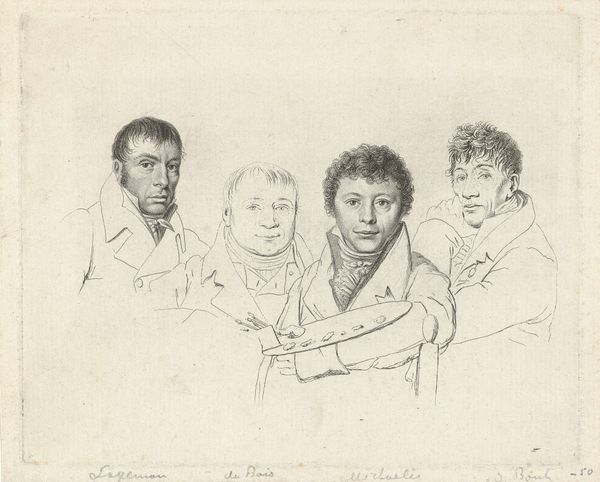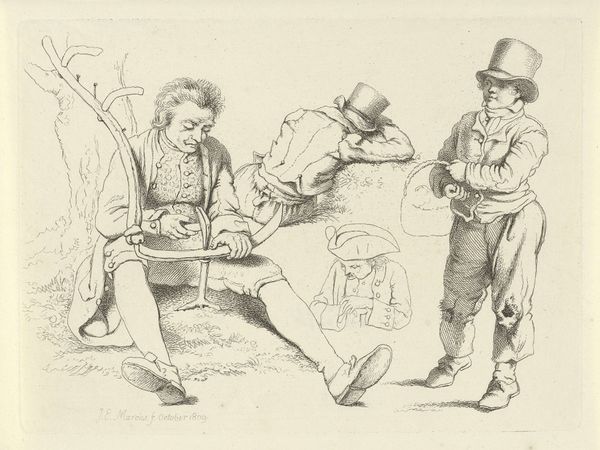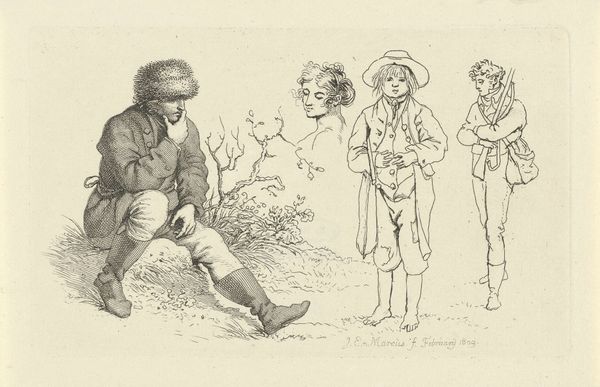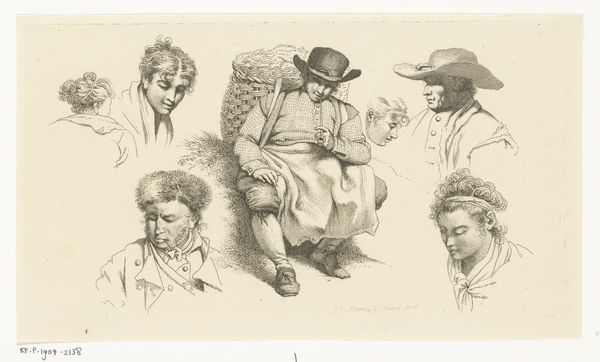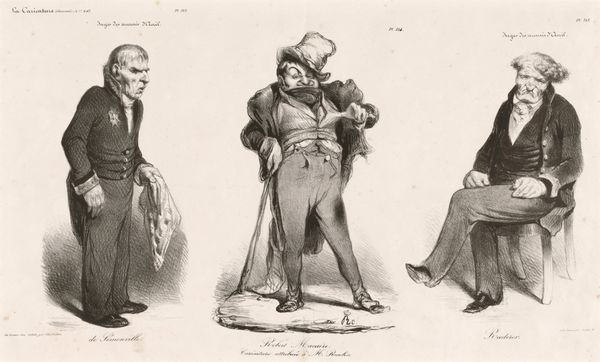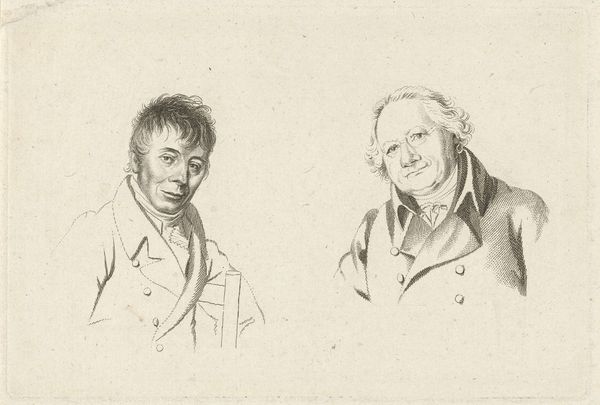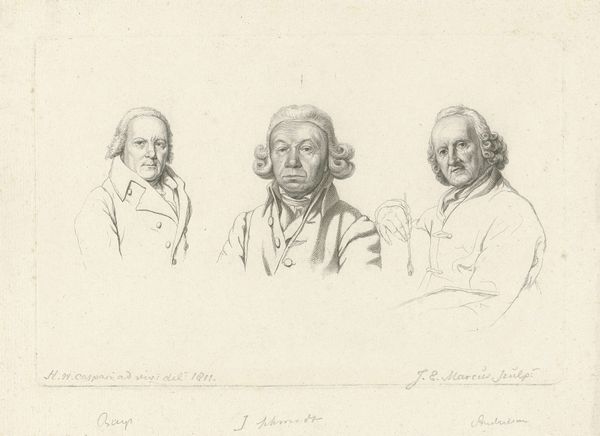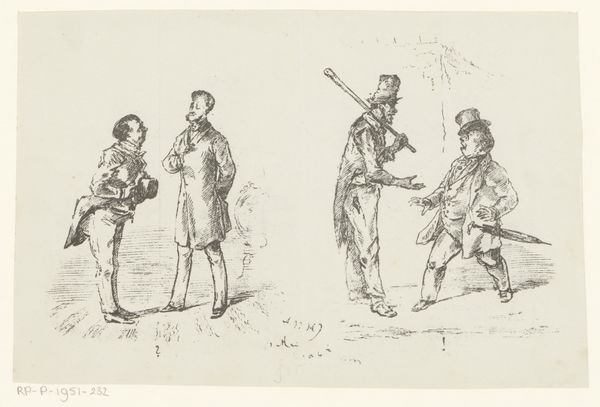
Portretten van J.P. Visser Bender en P.Pz. Barbiers naast een jongen 1812 - 1818
0:00
0:00
drawing, pencil
#
portrait
#
drawing
#
imaginative character sketch
#
light pencil work
#
quirky sketch
#
pencil sketch
#
personal sketchbook
#
idea generation sketch
#
sketchwork
#
romanticism
#
pencil
#
sketchbook drawing
#
genre-painting
#
storyboard and sketchbook work
#
sketchbook art
Dimensions: height 117 mm, width 174 mm
Copyright: Rijks Museum: Open Domain
Editor: This is "Portretten van J.P. Visser Bender en P.Pz. Barbiers naast een jongen" by Jacob Ernst Marcus, created between 1812 and 1818 using pencil. What strikes me most is the contrast between the poised portraits of the two men and the almost caricature-like depiction of the young boy. What's your take? Curator: That contrast is precisely where the socio-political commentary lies. This drawing isn’t just a portrait; it’s a snapshot of class divisions during a period of significant social upheaval in Europe. Notice how the men are meticulously rendered, reflecting their status, while the boy seems almost allegorical, representing a broader social issue. What does his dress and the goods he carries tell you about his position in society? Editor: He's dressed very plainly and is carrying goods, so perhaps he's a common labourer, maybe a street seller? It highlights the economic disparities present at the time, making the opulence of the men more conspicuous. Curator: Exactly. And consider the gaze of each figure. The men project an air of authority and self-importance, whereas the boy’s expression might suggest a sense of resignation or perhaps even a quiet defiance. How do you think this composition speaks to ideas of power, privilege, and representation? Editor: I see your point. The drawing becomes more than just a rendering of individuals; it's a statement about societal inequalities, a visual critique. The seemingly innocent details reveal a much deeper conversation about who is seen, who has a voice, and who is marginalized. It makes you think about similar power dynamics today. Curator: Precisely. Art often reflects and refracts the world around it. Understanding these historical contexts allows us to engage more critically with both the artwork and the issues it raises. Editor: That’s fascinating! Thanks for illuminating the historical context – it adds a whole new layer of meaning to what I initially perceived as a simple drawing.
Comments
No comments
Be the first to comment and join the conversation on the ultimate creative platform.

